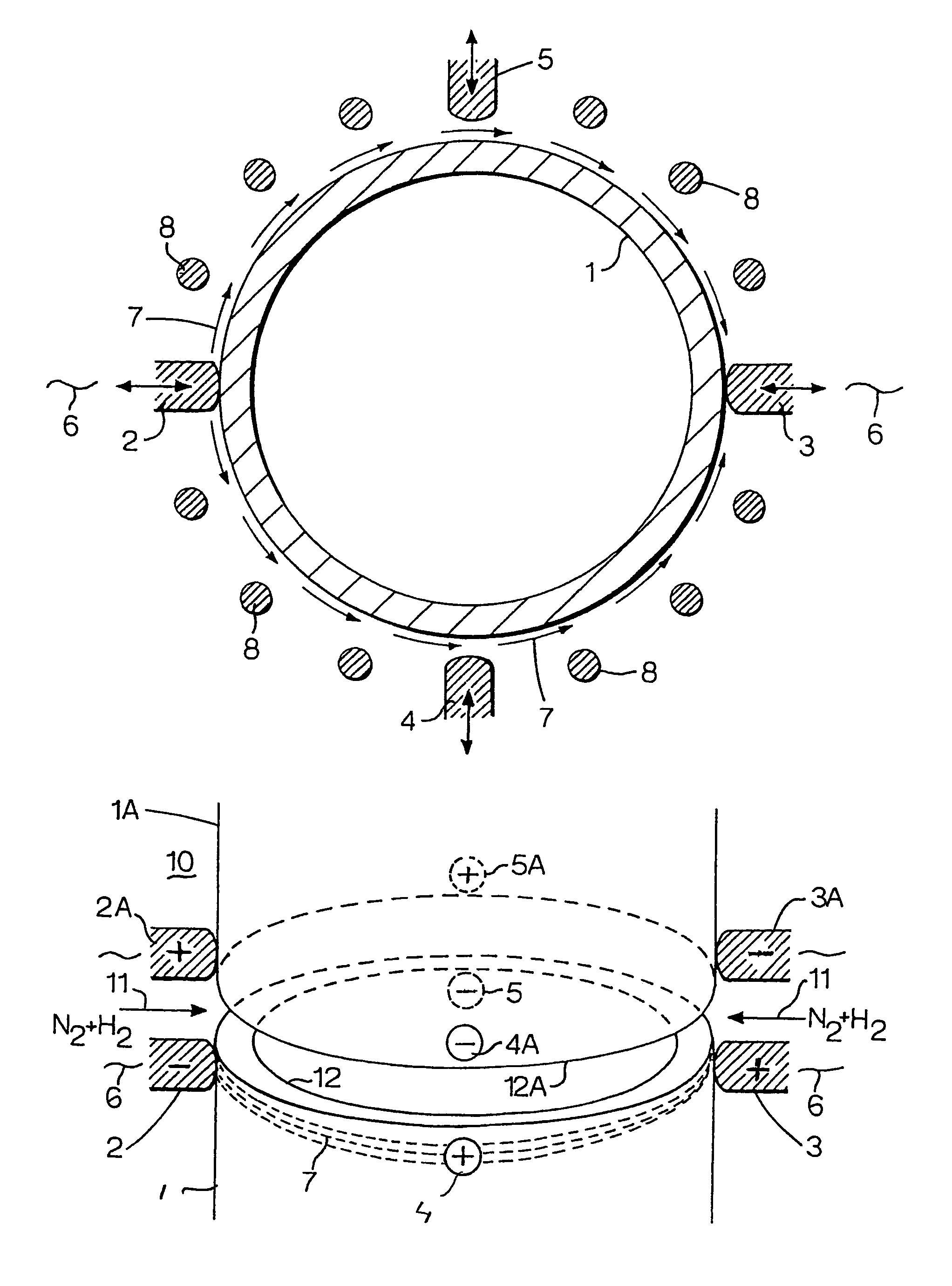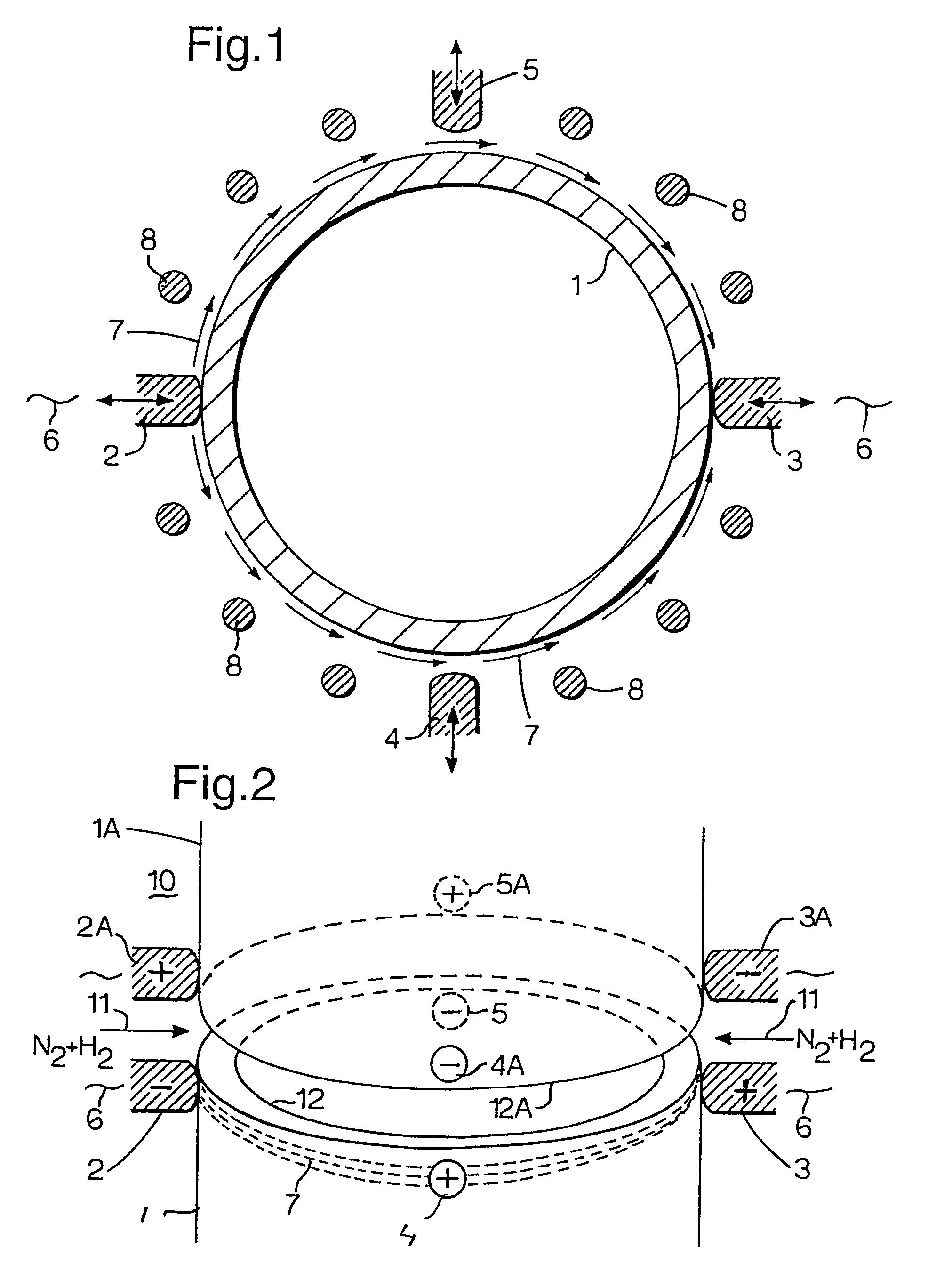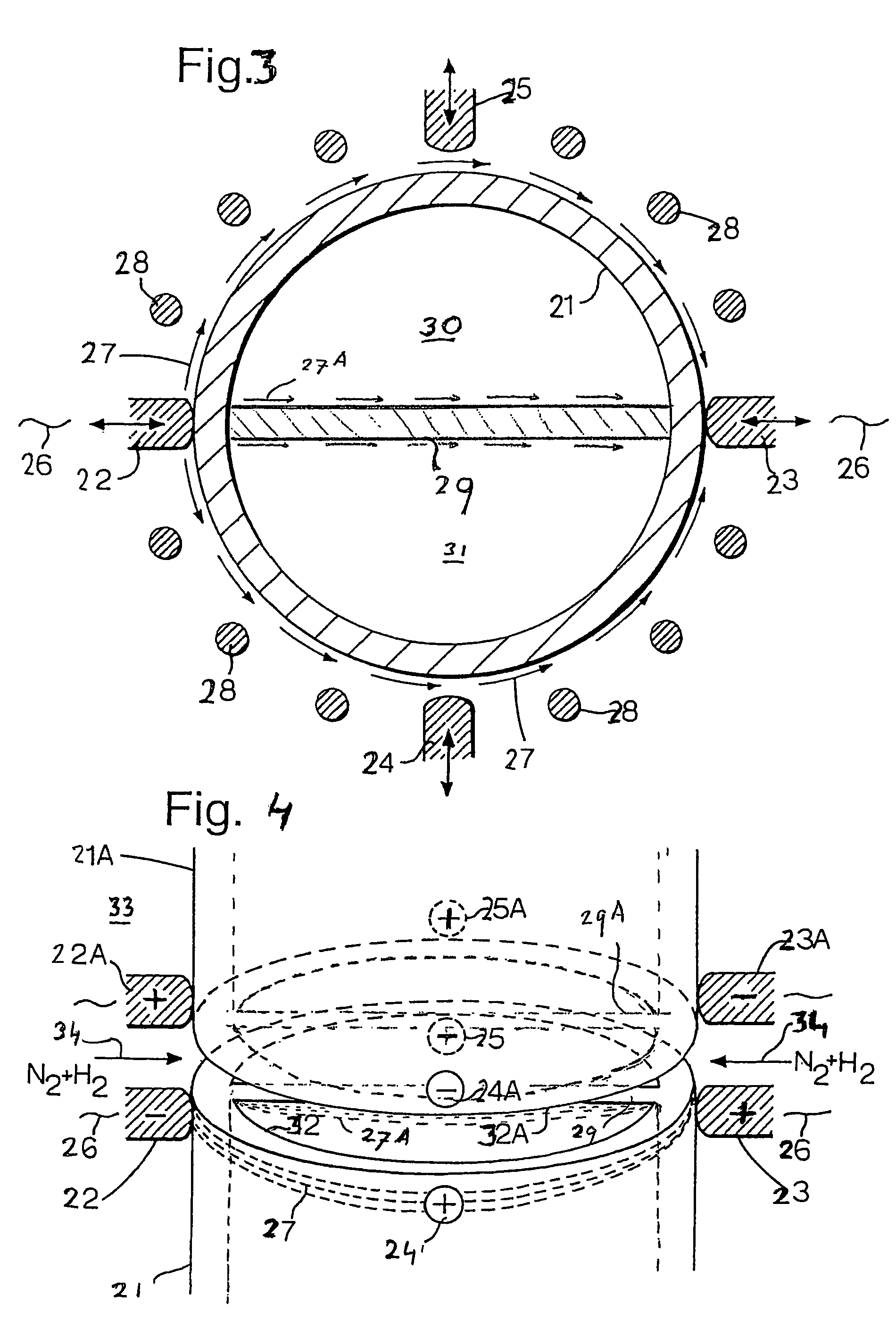Method for interconnecting tubulars by forge welding
a technology of interconnection and forging welding, which is applied in the direction of welding apparatus, non-electric welding apparatus, manufacturing tools, etc., can solve the problems of not being able to use in hazardous areas, offshore oil and/or gas production platforms
- Summary
- Abstract
- Description
- Claims
- Application Information
AI Technical Summary
Benefits of technology
Problems solved by technology
Method used
Image
Examples
Embodiment Construction
[0025]Referring to FIG. 1 there is shown an end of a steel tubular 1 around which two pairs of diametrically opposite electrodes 2, 3 and 4, 5 are arranged.
[0026]The first pair of electrodes 2, 3 is pressed against the outer surface of the tubular 1 and transmit a high frequency current 6 through the wall of the tubular as illustrated by arrows 7. An assembly of ferrite bars 8 serves to enhance the current density in the immediate vicinity of the ends of the tubular 1 and of the adjacent tubular (not shown).
[0027]FIG. 2 shows how the ends 12, 12A of two adjacent tubulars 1 and 1A are each heated by two sets of diametrically opposite electrodes 2, 3, 4, 5 and 2A, 3A, 4A and 5A, respectively. The tubular ends 12 and 12A are located at a few millimeters distance from each other during the heat up phase. The larger spacing of current density arrows 7 and 7A midway between the electrodes 2, 3 and 2A, 3A illustrate that the current density midway these electrodes is lower than the current...
PUM
| Property | Measurement | Unit |
|---|---|---|
| electrical current | aaaaa | aaaaa |
| electrical current | aaaaa | aaaaa |
| electrical current | aaaaa | aaaaa |
Abstract
Description
Claims
Application Information
 Login to View More
Login to View More - R&D
- Intellectual Property
- Life Sciences
- Materials
- Tech Scout
- Unparalleled Data Quality
- Higher Quality Content
- 60% Fewer Hallucinations
Browse by: Latest US Patents, China's latest patents, Technical Efficacy Thesaurus, Application Domain, Technology Topic, Popular Technical Reports.
© 2025 PatSnap. All rights reserved.Legal|Privacy policy|Modern Slavery Act Transparency Statement|Sitemap|About US| Contact US: help@patsnap.com



